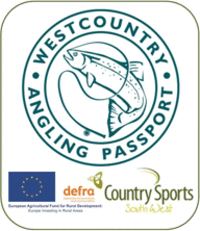The River Exe at Thorverton typically exhibits a range between 0.23m and 2.00m. Monitoring data reveals that it has remained within this range for approximately 90% of the time since monitoring commenced. Over the past 12 months, the river's average level at Thorverton has ranged between 0.26m and 1.78m, with at least 150 days experiencing levels within this range. The highest recorded level of the River Exe at Thorverton occurred on Sunday, 4th December 1960, at 4:00 pm, reaching a height of 3.64m.This camera was installed and is maintained by the Environment Agency and can be viewed
here. All content is available under the
Open Government Licence v3.0. The name "Thorverton" is believed to have Scandinavian origins, possibly named after its founder. Historical records mention the parish as "Toruerton" in 1182, and by 1340, it was referred to as "Thorferton." Alternatively, some sources suggest that the name may stem from an ancient reference to a thorn-bush located near a river crossing.During Roman times, a brief settlement existed on a hill overlooking a crossing point across the River Exe, near the present-day bridge and webcam location. This crossing was significant for the military garrisoned at Exeter (Isca Dumnoniorum). However, there is no evidence to suggest that a settlement existed at Thorverton during the time of the Domesday Book in 1086. Thorverton Mill, situated on the River Exe, was operational during this period and continued its operations until closure in 1979.
The central area of the village, known as The Bury, is likely the oldest part of Thorverton. Following the Anglo-Saxon conquest, Thorverton became a military plantation, and The Bury served as a stockade, forming a wide rectangle capable of housing all the cattle during times of crisis. Over time, this space became commonly used for cattle trading. The earliest indication of a market in the area can be traced back to a charter for a fair in 1250, granted to 'Thormerton'.




